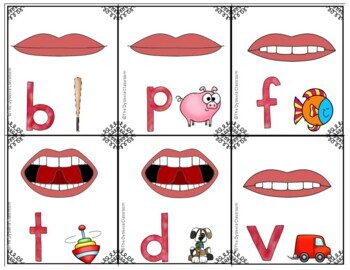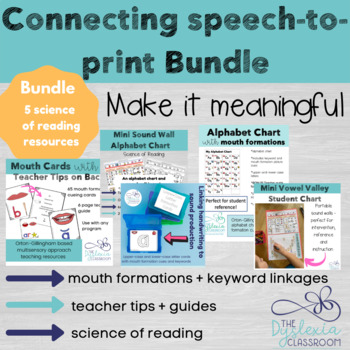Tips For Success: Movement and Short Vowels
This week, I'm sharing a short video with quick tips for helping your students remember short vowel sounds.
Clearing Up Short Vowel Sounds with Movement Cues
If you work with early learners or dyslexic learners, you may need a great deal of practice with short vowel sound production. Many children will confuse vowel sounds in phonology work, reading, spelling, and sometimes running speech. This may occur for several different reasons. Some children may find sound discrimination tricky, and others may struggle with recalling the sounds when given a letter representation. Some students may also struggle with phonological processing, have speech sound errors, sound substitutions, omit sounds, add sounds, or distort sounds. If this is the case for your students, keep reading. This week, I'm sharing some tips for teaching short vowel sounds.
Closed syllables, a syllable with one vowel followed by one or more consonants, make up almost half of all syllable types. When we can engage more than one sense or multisensory instruction, it gives students more than one way to make connections and learn a concept. For some students with dyslexia, retrieval of short vowel sounds may be difficult. With this knowledge that short vowel sounds make up the majority of syllables in our language, students need to solidify their understanding of closed syllables and short vowel sound production.
We can help students recall these sounds with these tips:
- Choose a keyword that provides a clear pronunciation in isolation. We need to be mindful that the keyword is a word that elicits a pure sound. This is due to the allophonic variations in our language. An allophonic variation is the coarticulation of speech sound that distorts sound production. Say the word umbrella. The short u sound is distorted due to the nasal /m/. Now say up. You can hear the pure /u/ sound in the word up. In addition, when viewing mouth formations, the word up provides a more precise representation of the short u sound. While many programs and resources use the keywords umbrella and elephant or egg, we can shift those keywords to ones that elicit pure sound production as we better understand allophonic variants and sound production. If you find that some of the keyword choices in your current curriculum don't produce pure sounds in isolation, you can change those keywords or modify them to make sound production clearer. For example, if your curriculum's keyword is an umbrella, add an arrow pointing up or movement cues to reinforce the short vowel sounds.
- Add simple movements to align with the keyword. Who doesn't like to move when learning? Movement is a wonderful way to help cue students, engage them, and make learning multisensory and fun! 🎥Check out the video above to see how I incorporate hand movements for short vowel sounds with my students. These movement cues in connection with mouth formation awareness have helped my students connect the sounds to the graphemes, especially those with retrieval difficulties. As we build automaticity with short vowel sounds, this is part of our daily review. Then, as students become automatic, we can remove this scaffold. If students become stuck with retrieving the short vowel sound, a simple movement can cue the correct sound production.
- Add mouth formation cards to bring awareness to the articulatory features. Individual phoneme production is an integral part of reading and spelling instruction. When we explicitly teach phonemes' articulatory features, we are helping to create links between the individual speech sounds and the letter representations. Sound production and mouth formations are key to assisting students in linking the phonemes, those sounds that they hear, to the graphemes, which are the letter representations of those spoken sounds. They also provide students and teachers with cues for error corrections. Explicitly teaching these to our students provides them with the knowledge and ability to analyze sounds more deeply.
Read more about articulatory features and the research here
- Practice sound production in isolation. Sound production in isolation can be challenging at first, especially if you are not familiar with the mouth formations, clipping of sounds, and articulatory features. I have created a library of video clips for this reason. I share some tips and examples of how I teach sounds to students and model sounds based on their articulatory features. You can find these videos here.
- Be mindful of your scope and sequence, and spread the teaching of short vowels with similar sounds, like short e and short i. Short e/i is a common sound confusion for many students. I like to tell my students that "/i/ makes you grin and /e/ drops the chin." This is a catchy saying that is easy to use and brings awareness back to the mouth formation. I made the video clip here to show how I use mouth formation to differentiate between sounds and grab your freebie poster!
Bringing movement and cues to sound production is an effective way to bridge knowledge to practice. We may often feel pressure to move to new concepts quickly but understanding the need to provide enough practice for skills to transfer to application and automaticity is key for our students. While some children may transfer knowledge in one to four exposures, many children, especially those with dyslexia, need more practice to automatize their learning. Bringing movement into our practice and being mindful of how we are connecting learning is crucial. Let me know how you bring movement into your work with short vowel sounds.
Have you tried hand movements with your students? Watch the video 👆 for a few examples.
Need More Support?
To read more about vowels and the vowel valley, check out THIS blog post.

The cards I use in the video can be found HERE. The cards tell you where the sound comes from within our mouth (front, middle, or back of the mouth), the manner of articulation (what are the teeth, lips, and tongue doing), and the use of voice or unvoiced sound production to strengthen phonological awareness, reading, and spelling. These mouth formation cues are essential for anchoring sounds to letter representations, especially for struggling readers.
You can find the mouth cards in this Connecting Speech-To-Print Bundle. This bundle is perfect for helping students link speech sounds to print - a key component in the science of reading. You will have everything you need to support students in mouth formations, speech production, keyword and letter knowledge, and handwriting linkages.
I hope these quick tips help you incorporate movement into your short vowel lessons. Give them a try and let me know how your students like them.

This information is the intellectual property of @2016 The Dyslexia Classroom. Do not use or repurpose without expressed permission from The Dyslexia Classroom. Please give The Dyslexia Classroom an attribution if you use, reference, or quote/paraphrase copyrighted materials. This includes but is not limited to blogs, social media, and resources.




